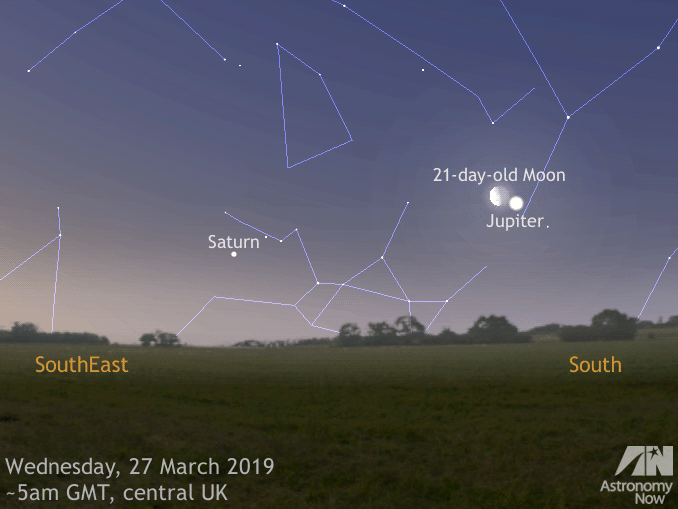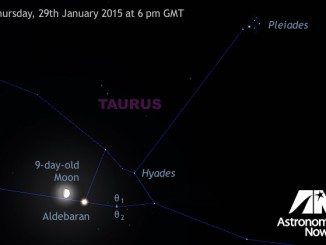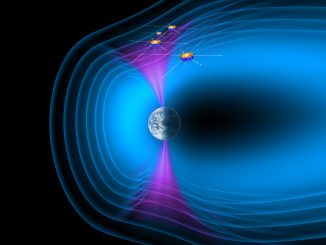
Jupiter, the largest planet, currently lies in Ophiuchus, the unofficial 13th zodiacal constellation. Presently shining at magnitude -2.2 and therefore the brightest object in the dawn sky other than the Moon, Jupiter can be found low in the southern sky at the onset of civil twilight some 35 minutes before sunrise in the UK.
On the morning of Wednesday, 27 March around 5am GMT you can find Jupiter just 1½ degrees to the lower right of the 21-day-old waning gibbous Moon. Hence the Moon and planet will just fit in the same field of view of binoculars and telescopes magnifying 30× or less. In higher magnification instruments you’ll see that Jupiter appears to have only two Galilean moons at this time – Callisto to the east and Ganymede to the right. (Io is behind Jupiter and Europa is eclipsed by the planet’s shadow).
Two mornings later, it’s magnitude +0.6 Saturn’s turn to get somewhat closer to the waning Moon. If you look very low in the south-southeast at 5am GMT on Friday, 29 March you can see the 23-day-old lunar crescent just two Moon widths below the ringed planet. Saturn’s largest and brightest moon, magnitude +9 Titan, happens to be close to greatest elongation this particular morning, some 4⅓ ring diameters east of its parent planet.
As seen from more southerly latitudes, specifically South Africa, the Moon actually occults (passes in front of) Saturn around nautical dawn on Friday, 29 March.



